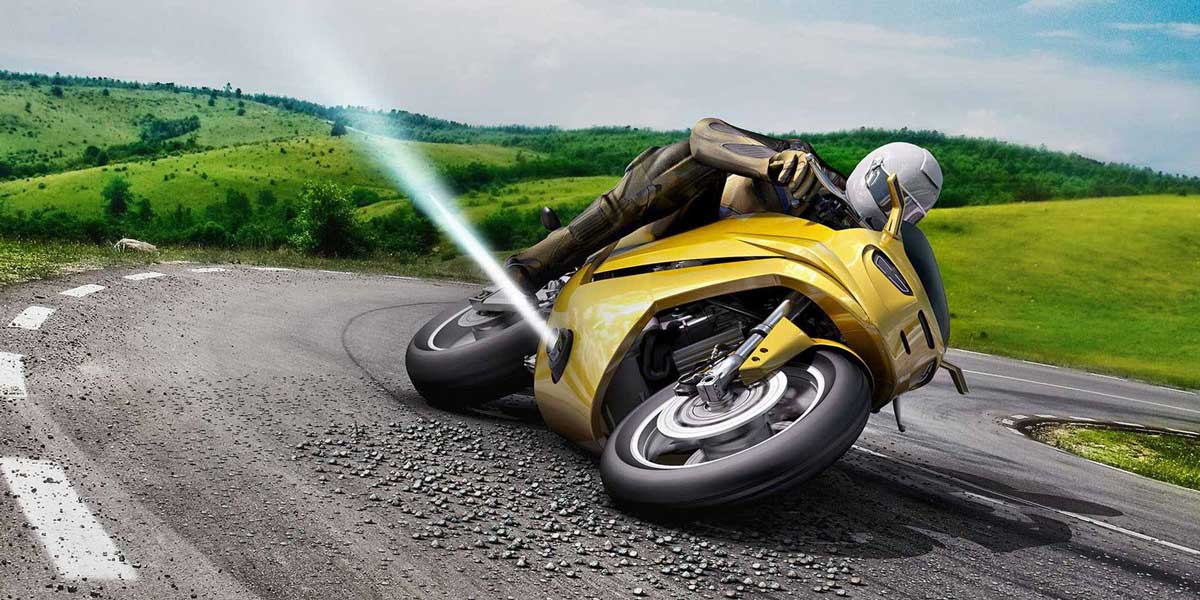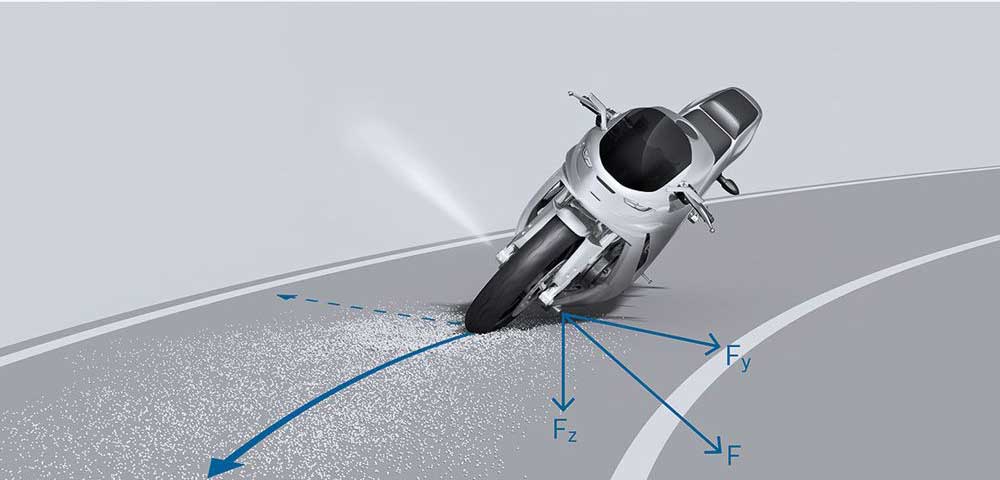Are Rockets the Solution to a Crashing a Motorcycle? | 2019 Report

Posted By

Ed Merati, Director of Logistics, lifetime motorcycle enthusiast and garage guru. [email protected]
Drivers distracted by their cellphones. Wildlife. Loose gravel. A quick search online will pull up countless surveys, all asking riders some form of the same question: “What’s your biggest safety concern when you’re on your motorcycle?”
When Bosch conducted its own survey, the answer was clear: hitting a slippery patch. So the German brand decided to do something about it. Enter “jet thrusters,” which have been making headlines ever since Bosch rolled them out last year on the motorcycle tradeshow circuit.
The rundown on “lowsider” crashes
If you’ve never experienced a lowsider crash while taking a turn, you’ve definitely seen a video of one online. It goes something like this: you accelerate or brake too much, or run into slippery road conditions, and it causes your bike to lean to one side when you’re cornering. The result? Either your front or back wheel slides out from under you, and you skid across the pavement.
Compared with a “high side” crash—the kind where you’re thrown from your bike—“low sides” are generally less dangerous. Still, the result of a low-grip lowsider isn’t pretty: gravel rash, impact injuries and potential damage to your bike. (Note that you’ll be a lot better off in this scenario if you’re wearing protective clothing.)
A lowsider is one of the most common types of motorcycle accidents, and even experienced riders can’t always avoid a low side accident. But what if your bike had a way to gauge wheel slip and right itself before an actual crash occurs? That’s the idea behind Bosch’s jet thruster and other sliding mitigation technologies popping up in motorcycle R&D labs around the nation.
How Bosch’s jet thrusters work
When Bosch debuted its jet thrusters, industry reviews were positive, but a bit tentative. That’s not surprising. Given the “new age” aspect of having jets attached to your motorcycle and the description of the technology as an “invisible hand” that prevents lowsider accidents, it’s natural to be a bit skeptical.
And at first glance, the concept does beg the question: Will rockets on your bike actually make riding safer?
But when you take a closer look at how Bosch’s jet thrusters actually work, they’re not as outlandish as they sound. More than that, they actually make a lot of sense. As Bosch explains it, the technology uses a sensor built into the motorcycle to detect sideways wheel slip. If that slip hits a certain level, it triggers the release of gas—a lot like the kind you find in a car’s passenger airbags. That gas moves into the tank adapter, where it’s vented out through a nozzle in the direction needed to keep the motorcycle upright. (That’s a fancy way of saying that the gas jets out from the “high” side of your bike.)
Bosch’s jet thrusters are getting a lot of attention, but unfortunately for riders, the technology is still in development. No production launch is planned as of yet. And based on the system’s single-use design and complexity, it’s likely that the first bikes to get the “invisible hand” treatment will be high-end models.
Too many accidents, too much technology or both?
Technologies like Bosch’s jet thrusters are part of a bigger push to minimize—if not eliminate—motorcycle crashes. The National Highway Traffic Safety Administration shows motorcycle accidents up 5.1% between 2015 and 2016, with riders accounting for 14% of all traffic fatalities.
Safety is an undeniable consideration for every rider, and I think we’d all agree that the fewer accidents, the better. And with Bosch’s jet thrusters still in the testing phase, it’s safe to say that we’ve got some time before slipping mitigation technology is a feature of all new motorcycle models. But the shift toward more tech-heavy bikes is fueling a debate in rider communities that’s much bigger than a single sensor or system:
Does technology really enhance our riding, or does it take the joy out of it? And on a much more literal note, what happens if the jet thrusters go off at the wrong time?
